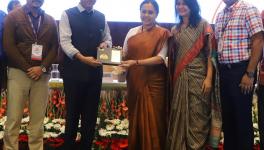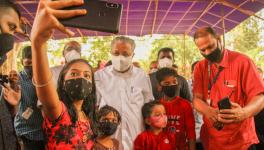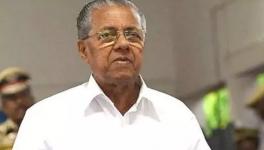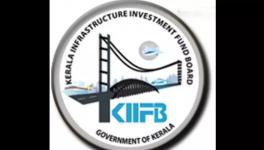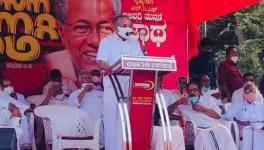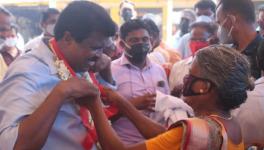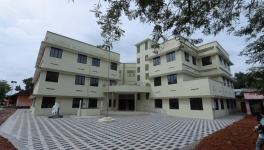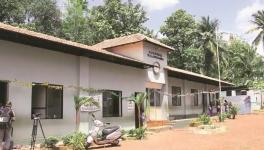Kerala Elections: How the State’s Public Education Sector Was Revamped over Five Years

Image Courtesy: Times of India
As the current government in Kerala steps down from power, the public education sector can hold its head high after significant achievements in primary and secondary education. The Public Education Rejuvenation Mission has become the back bone of this systemic change in the state’s education system; it focuses on improving academic standards, digital systems, infrastructure development and child access.
What is Public Education Rejuvenation Mission?
The Public Education Rejuvenation Mission is one of four ambitious projects – policies which have changed the face of the state – by the Left Democratic Front which promised a Nava Kerala (New Kerala). It aimed at upgrading all classrooms to an international standard and set-up hi-tech IT labs. Kerala Infrastructure and Technology for Education (KITE) was assigned the task with funding from the Kerala Infrastructure Investment Fund Board (KIIFB). The mission helped in regaining the lost public trust in government and state-aided schools and provided free education to the entire student population of Kerala.
As part of the mission a total of 42,000 classrooms for students between classes 8 and 12 were equipped with laptops, projectors, screens and networked with school studios. All lower primary and upper primary schools have at least one smart classroom with a computer laboratory.
The comprehensive educational reforms included upgrading 1,000 government schools to international standards – an election promise of the LDF in 2016. The reforms not only focused on improving infrastructural facilities, but also on teaching and learning, aligning it to present-day needs by introducing Information and Communication Technology (ICT)-enabled learning and smart classrooms. A special focus was given to creating educational programmes for differently-abled students.
Under the mission, each government school with over 1,000 students got up to Rs three crore for basic infrastructure development. State-aided schools will get government support of up to Rs one crore for the same and an equal share of money would have to be raised by the management.
The mission also aimed to redefine the existing classroom learning process and develop a ‘Janakeeya Vidyabhyasa Mathruka’, which roughly translates to ‘People’s Education Model.’ Through various programmes the mission brought together parents, politicians and the public on a single platform for developing public educational institutions across the state, the government had said earlier.
First State with High-Tech Classrooms in All Govt. Schools
In October 2020, Chief Minister Pinarayi Vijayan had declared that the state public education sector was completely digital with high-tech classrooms in all government schools, marking a first in the country.
Courtesy the upgrade students got access to advanced learning systems. Over three lakh digital equipment, including laptops, projectors, webcams and printers were provided as part of the project.
All 16,030 public schools in the state are now equipped with 3,74,274 IT equipment, including 1,19,055 laptops, 69,944 multimedia projectors, 23,098 projector screens, 4,545 LED TVs, 4,578 DSLR cameras, 4,720 HD webcams and 4,611 multi-function printers along with high-speed, broadband Internet connectivity to 12,678 schools, as per government figures.
“Kerala has become the first state to have high-tech classrooms in all public schools,” said Vijayan, adding that his government presented before the world a Left alternative – “a Kerala model of education for our future generations”.
“It was the firm decision of the Left government to make education accessible to all sections of society. Now, all the children in the state have access to the opportunity to learn and grow with the help of advanced learning systems. It is a proud achievement for the state,” the chief minister said.
How Inclusive are These Online Classrooms?
All the public schools in the state have similar facilities irrespective of the rural-urban divide. The CM also stressed that equal opportunities have been ensured for all.
Since the COVID-19 pandemic resulted in a systemic change in education, the students were forced to turn to virtual class rooms. On June 1, 2020, over 45 lakh students in the state had started attending school through virtual classes. Online sessions by the name ‘First Bell’ were telecast on VICTERS Channel under the State General Education Department for classes 1 to 12 from 8.30 am to 5.30 pm on weekdays.
“This is not an alternative to the classroom but the education department has been providing maximum support to the students,” state education minister C. Raveendranath had said back then.
However, student access to these online classes was a cause for concern within the education department and the government. According to the Director of Public Instruction (DPI) K.Jeevan Babu, the department was worried about a section of students who lacked facilities for online classes; it had identified over two lakh students in that category. However, with the help of various organisations the government ensured the availability of resources to every student across the state.
“We have entrusted class teachers and school headmasters or principals to make sure that students have access to a television or a smart phone or a computer, and internet for the classes. If not, they should find an alternative for the students to attend the online classes either in real time or later,” Babu had said.
Many neighborhood communities, libraries, local self-governments, etc. had come forward to help set up digital classrooms in many places, including in Dalit colonies and Adivasi hamlets across the state. In certain places students from the same locality used to sit together in one particular house and attend classes. Even local self-governments have tried to bridge the digital divide by crowd-sourcing android TVs and Wi-Fi devices and certain panchayats even provided smart phones to those students who lacked one.
Rea More: Kerala Topped NITI Aayog’s School Education Quality Ranking
In a report released by NITI Aayog in October 2019 Kerala had emerged on top among 20 large states in terms of the quality of school education, followed by Rajasthan and Karnataka.
The efforts of the LDF government were not just limited to this. Soon after coming to power in 2016 the government decided to take over the Malaparamba Aided Upper Primary School in Kozhikode, which had been shut downby the school management. Similarly, it took over three other schools across the state, including Parasurama Memorial LP School in Thrissur and Mangatumuri LP School in Malappuram.
The opposition targeted the education department saying that the number of students enrolled in government schools was less than the number projected by the government. “The difference in the number of children obtaining admission in public schools has been analysed scientifically and officially published from 2017-2018 – from the first year after the beginning of the Public education protection campaign. The Department of Statistics started publishing the change in the number of children in schools in Kerala for the last 30 years from 1990-1991 to 2019-20. Even if you look at this chart at a glance, you can clearly see a rise from 2018-19,” said Prof C. Raveendranath while responding to the allegations by opposition parties.
According to a press release issued by the Director of Public Education on June 9, 2017, there was an increase of 12,198 students enrolled in the first standard alone that year. Also, 1.45 lakh new students had enrolled in classes two to nine. (Later, it was revised to 1.57 lakhs.)
In 2017 and 2018 3.3 lakh new children had been enrolled in public schools. In 2019-20 and 2020-21, it increased to 1.64 lakh and 1.77 lakh respectively, thus adding 6.8 lakh new students to public schools in the four years from 2017.
According to the June 2017 report by the Department of Public Instruction, the total number of children (studying in classes 1 to 10) decreased in 2015-16. However, in 2018-19, for the first time in the last 25 years, the total number of children increased by 32,349. In the years 2019-20 and 2020-21 the total number of children increased by 27,183 and 50,556 respectively.
Get the latest reports & analysis with people's perspective on Protests, movements & deep analytical videos, discussions of the current affairs in your Telegram app. Subscribe to NewsClick's Telegram channel & get Real-Time updates on stories, as they get published on our website.









